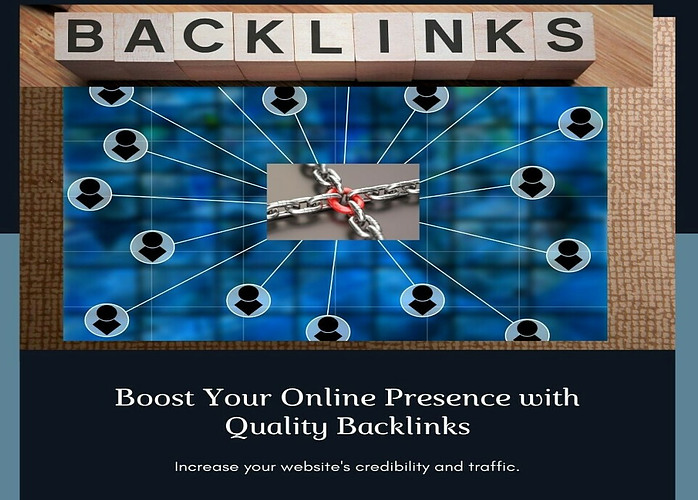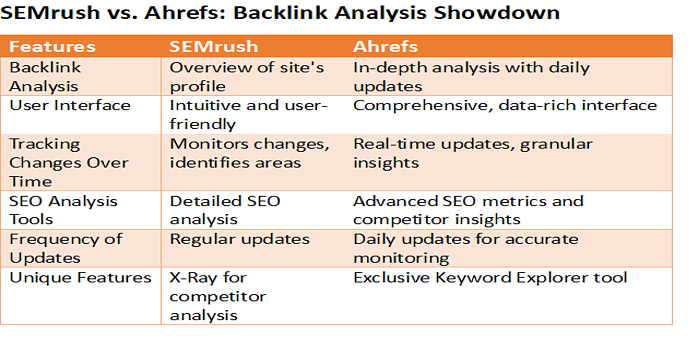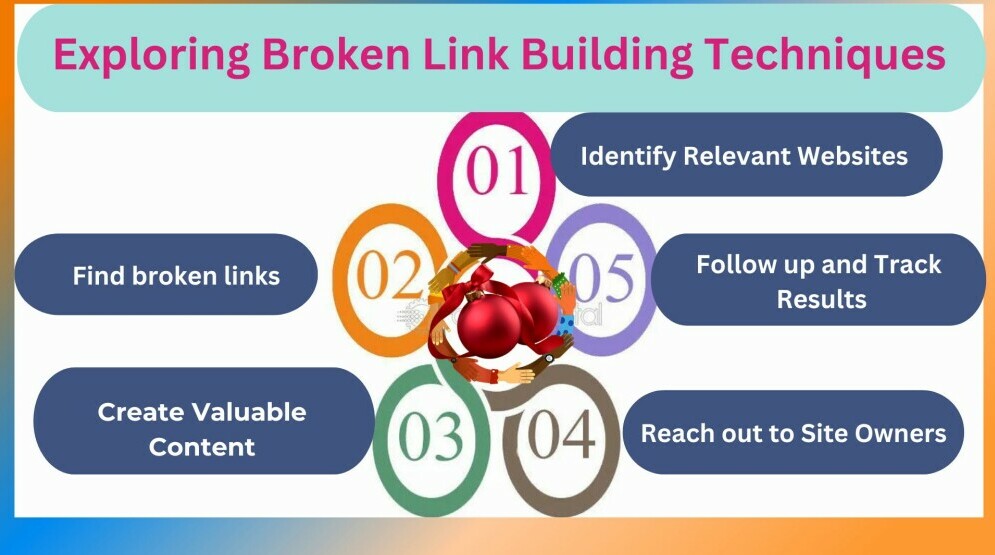Elevate your site’s authority! Discover proven techniques in our guide for quality backlinks. Amplify SEO, boost visibility, and dominate search rankings effortlessly.

Introduction
Welcome to this beginner’s guide to the effective link building techniques that can help your website gain those mighty quality backlinks. Before we dive deep into exploring various strategies, let us first define what are backlinks as well as explore the importance of backlinks, especially the high-quality ones.
What are backlinks?
In simple terms backlinks can be defined as links from one website that point to another website. For instance, if another website links to the content on your website, then you would have gotten a backlink to your page. Because the links are coming to your site, backlinks may sometimes be described as inbound or incoming links. Moreover, since the sources of the links are outside your website, backlinks could also be described as external links.

Importance of Quality Backlinks for Website Visibility and Authority
In the realm of Digital Marketing, backlinks act as the metaphorical bridges that connect your website to the rest of the internet world. A well-connected website through quality backlinks is a signal to search engines that others attest to the value of your content.
Therefore, the more quality backlinks you have, the higher the perceived authority and visibility of your website. This will result in improvement its ranking on Search Engine Result Pages (SERPs) leading to:
- Higher brand visibility,
- Increased website authority, and
- Improved search engine rankings
Overview of Advanced Link Building Techniques
Expect this section to act as your handy guide to advanced link building. We will be exploring several strategies, from the traditional outreach and guest blogging to more modern strategies like link reclamation and influencer partnerships. Our aim is to help you create a diversified and effective backlink profile for your website. Stay tuned!
Understanding Link Building
Link building is a critical, albeit often misunderstood, part of professional SEO practice. Let us delve into the nuts and bolts of this important process to set a firm foundation for other advanced strategies.

Definition and Purpose of Link Building
Link building is the method of getting other websites to link back to your website. These backlinks help users navigate between pages on the internet, serving as a kind of recommendation, stating, “Hey, this source is reliable and useful, check it out!”. But link building is not just beneficial for navigation. Here is why it is done:
- Increase visibility: A page with a lot of high-quality backlinks will often rank higher on search engine result pages (SERPs).
- Build authority: High-quality backlinks from authoritative websites crown you as a reliable source in your niche.
- Drive traffic: It follows naturally that more visibility means more clicks, which translates into more visitors to your site.
Types of Backlinks and Their Significance
It should be noted that the SEO world classifies backlinks in many ways. However, the two popular types are “follow” and “nofollow” backlinks.
Follow Backlinks: These provide SEO advantage. When a website links to you with a follow backlink, it’s like a vote of confidence, signaling to search engines that your page is relevant and valuable.
Nofollow Backlinks: These do not contribute to your SEO directly. It is like saying: “I’m linking to this page, but I don’t necessarily endorse it”.
That said, I hasten to add that despite the obvious benefits of follow backlinks, nofollow links are also important. They, too, help create a more natural backlink profile which Google loves.
The Role of Anchor Texts in Link Building
Moving forward, anchor texts! Defined as the clickable text in a hyperlink, they are often underlined and colored differently. Search engines use these texts to understand what your web page is about and aids in ranking your site accordingly. Therefore, the anchor text should accurately represent the linked page’s content to build a solid SEO foundation.
Researching and Identifying Link Opportunities
Link building, when done right, can do wonders for your website. Not only does it boost the number of scroll-throughs, but it also helps with improving your online authority, a crucial factor for search engine ranking. But where do you start? Here is where research and identification of link opportunities come into play.
Conducting Competitor Analysis for Link Opportunities
To begin with, take a close look at your competitors. Doing a competitor analysis helps you understand their link building strategies, what kind of content attracts more backlinks, and which websites are willing to link back to their sites. Implement tools like Ahrefs or SEMrush to gain insights on:- Competitor backlinks distribution by performing
anchor text analysis, as well as looking for the top linked pages.
Utilizing Keyword Research for Link Prospecting
Next up, is harnessing the power of keyword research. Dig into your niche-related keywords and find out which popularly searched phrases or questions you haven’t covered yet, or ones that you could better capture. Using a tool like Google Keyword Planner or Ubersuggest can be highly beneficial. When you find keyword-specific content gaps in your website, you can fill them up with high-quality content that appeals to the link prospects. Achieving this effectively can lead to a sizeable hike in the number of quality backlinks, thus strengthening your backlink profile over time.
Outreach Strategies for Link Building
Building a high authority profile does not occur overnight, but with the right approach and vital networking attributes, you can speed up the process. One such method involves the use of effective outreach strategies. Here are some of these strategies to help you out.
Personalized Email Outreach to Website Owners
A straightforward, yet powerful, way of earning valuable backlinks is by reaching out to website owners. But do not just send out generic emails; rather, make your emails amiable. Note that most website owners receive numerous emails, so, it is the personalized touches that make your emails stand out. – Research the website and owner, and try, as much as possible, to understand the kind of content they produce. Thereafter;
- offer them something in return, like a quality piece of content or mention in your own blog; and
- make sure your emails are engaging enough to convince them that linking to your website would be beneficial for their audience.
Leveraging Guest Blogging Opportunities
Guest posting is another advanced link building tactic that involves writing a blog article for another website. It is good that currently, many blogs accept guest posts, and in exchange, give you the opportunity to link back to your site in your author bio or within the content.
However, as you explore this backlinks-building strategy, make sure you are submitting to authority sites related to your industry, for the best result.
Collaborating with Influencers and Industry Experts
Collaborating with influencers and experts in your field is another effective strategy. Once you have identified and engaged with influencers in your niche, then you can choose to write a joint blog post, host webinars or work together on a podcast.
Through these joint ventures, the followers of the influencers will come to know you and, alas, associate you site authority with that of their influencers. Since influencers not only have a significant following, but also have a high domain authority site, your link to them can be beneficial, too, for your link profile.
Content Creation for Link Building
The cornerstone of any effective link building strategy is, undoubtedly, content creation. But not just any content, it’s all about creating high-quality shareable content and incorporating visual elements to enhance its linkability.
Creating High-Quality and Shareable Content
Creating stellar content is not just about being a good writer. It is about understanding your audience, their problems and needs. Once these are addressed, then you will be providing value through your content. To achieve this standard, ensure that in your content you:
- share tips, guides, and lessons that you have personally tested and found success with,
- use facts and data to back up your assertions and make your content more trustworthy, and
- commit to updating your content regularly and responding to comments or queries.
The more value you provide, the more likely other websites will want to link back to you.
Incorporating Visual Elements to Boost Linkability
Visuals such as images, videos, or diagrams can significantly boost the linkability of your content. Visual content marketing statistics released on Zipdo indicate that Visual content is 40x more likely to be shared on social media, with Infographics causing an increase web traffic by 12%, while social media posts with images getting 2.3x more engagement.
The same statistics show that having a featured image increases the odds of getting your content shared by 80%. So, when visual elements are included into your content, ensure that you:
- use quality images and screenshots where necessary.
- infuse videos and tutorials that make your content not only engaging but also easy to understand.
- leverage diagrams, charts, and graphs to explain complex ideas.
Developing Linkable Assets such as Infographics and Case Studies
Finally, consider developing content types that are proven to be high-performing in terms of acquiring backlinks, such as infographics and case studies.
Typically, infographics can simplify complex information in a visually appealing way, yet case studies display your experiences or successful projects and encourage others to learn or benefit from it.
These not only enhance your content but also give other sites more opportunities to link back to you.
Building Relationships for Link Building
Building productive relationships is crucial in an advanced link building strategy. It is not only about the technicality of SEO but also, to a great extent, it is about networking with the right people who have influence in your industry. This can be achieved through:
1. Participating in Industry Fora and Communities
Participation in relevant fora and online communities provides an excellent platform to share ideas, get to know your peers, and establish your brand image. Contributing valuable content and insights can establish you as a thought leader in your niche. By doing so, you can invite others to share your content and, ultimately, build quality backlinks.
- Essentially, build you network of industry peers by doing the following:
- Identify popular fora and groups related to your industry,
- Engage in discussions, brainstorming sessions, answer questions, and contribute useful information, and
- Avoid blatant self-promotion and focus on adding value.
2. Engaging with Bloggers and Influencers through Networking
Social media is another effective way to connect with influential figures in your industry. Through regular interaction, you can build relationships and gain their trust, leading to collaborations and backlink opportunities. Be proactive and:
- Follow influential bloggers and thought leaders in your field on social media,
- Comment on their posts, share their content, and engage in their communities, and
- Initiate collaboration by offering guest posts or inviting them to contribute to your blog.
One of the best strategies for engaging blogger and influencers is through such activities as attending industry events, thereby building the beneficial network of like-minded people.
Do not ignore this, but attend industry-related events including: seminars, conferences, and workshops. These events are the ideal platform for networking and establishing relationships with industry influencers, which can lead to quality backlinks. You can implement this strategy through:
- identifying upcoming industry events and plan your participation.
- reaching out to speakers and attendees, share ideas and offer collaboration opportunities.
- following up after the event to strengthen the bonds you have cultivated.
Remember, earning high-quality backlinks is a result of good relationships in your industry and these strategies can help build your backlink profile.
Effective Link Building Tools and Resources
Quality backlink generation requires a diverse set of tools and resources designed for different objectives. From conducting profound backlink analysis to identifying guest blogging opportunities and generating innately linkable content, these tools can make your link building efforts less tedious and more productive. Here-below, I summarize the tools you can explore to build quality backlinks.
1. Link Building Tools for Backlink Analysis and Monitoring
Analyzing and monitoring the health of your backlinks is paramount and, thankfully, several online tools facilitate this task. To achieve this goal, you can use such tools as SEMrush, and Ahrefs.
Typically, SEMrush provides an overview of a site’s backlink profile and monitors its changes over time. This allows you to gauge your website’s backlink status and identify areas that need your attention.
Another valuable tool is Ahrefs, which provides an in-depth view of your backlink profile and SEO analysis, with daily updates.
Backlink analysis forms the backbone of SEO strategies. Choosing the right tool can make all the difference. In the table blow, is a comparison between SEMrush and Ahrefs, two powerhouses in the realm of backlink analysis.

Therefore, judging from the SEMrush vs. Ahrefs Backlink Analysis Showdown, both tools excel. So, depending on your specific needs, as a guidance, choose SEMrush for a comprehensive overview or Ahrefs for detailed daily updates.
2. Resources for Finding Guest Blogging Opportunities
Guest blogging is a proven technique for generating quality backlinks. Websites like MyBlogGuest and GuestPostTracker can help you identify opportunities. Typically:
- MyBlogGuest is a platform where bloggers can meet to exchange guest posts , while
- GuestPostTracker lists blogs that accept guest posts, conveniently sorted by category.

3. Content Creation Tools for Developing Linkable Assets
Developing ‘linkable’ content is a surefire strategy to attract quality backlinks. Tools like Buzzsumo and Canva can significantly aid in the content creation process. Here is the goodness they offer on a platter:
- Buzzsumo helps discover trending topics, analyze what content performs best for any topic or competitor, and
- Canva is a user-friendly design tool to create visually impressive assets that people want to link to.
Embracing these tools and resources can not only simplify, but also elevate your advanced link building strategy, ensuring droves of quality backlinks for your website. One comment I can add is that these companies offer free trials such that you get acquainted with their tools before you decide to go for pay services, which are more comprehensive.
Monitoring and Evaluating Link Building Campaigns
In your journey of acquiring advanced link building knowledge; monitoring and assessment play a crucial role. You can bolster the effectiveness of your strategies by keeping a consistent eye on your link-building campaigns. This involves understanding your backlink metrics, evaluating the quality of procured backlinks, and, when necessary, making improvements to your approach. Let us delve into details:
Tracking and Analyzing Backlink Metrics and Performance
The first step in assessing your link-building efforts is to monitor your backlink metrics. Here is how you can go about it:- Use SEO tools such as Ahrefs, SEMRUSH, or MOZ to track new backlinks and lost backlinks.
As you audit your overall website performance, keep tabs on the quality of backlinks, which impact on both Domain Authority (DA), Page Authority (PA), among others.
Go ahead to monitor your organic traffic, as this is the ultimate indicator of your SEO performance.
It is important to always keep this in mind: it is not all about numbers! Quality trumps quantity when it comes to backlinks. This brings me to the second important issue:
Evaluating the Quality and Relevance of Acquired Backlinks
After assessing backlinks gained and also those lost, the next step is to inspect the quality and relevance of your acquired backlinks. Not all backlinks carry the same weight. As a rule of thumb, getting a backlink from a high-authority, relevant website is more beneficial than dozens from low-quality, unrelated ones. Thereafter;
3. Make Necessary Adjustments and Improvements to the Link Building Strategy.
Empowered by the useful data at your disposal, it will be time to make any necessary improvements to your link-building strategy. Analyzing your campaign is pointless without taking action.
Focus on obtaining more valuable links instead of a higher volume and strive to gain backlinks from a variety of websites to increase your overall link diversity.
Remember, SEO is a marathon, not a sprint. Stay patient, persistent, and keep refining your strategies for optimal results.
Building Links from Outdated Resources
Spotting broken or outdated links on relevant websites can be your golden opportunity. Broken links do damage by:
- stopping search engine website crawlers in their tracks – damaging your rankings by preventing Google, Yahoo, Bing, etc. from indexing the page, and
- negatively affecting user experience – by redirecting visitors to error pages.
Tools like Dead Link Checker come to your aid here. Craft updated, superior content on the same topic and graciously inform website owners about the broken link, offering your content as a valuable replacement.

How to Avoid Common Link Building Mistakes
Quality is a huge factor when it comes to link building, but a lot of us sometimes fall into the trap of some common mistakes. Let us revisit them, so we can avoid these pitfalls in our link building journey.
1. Avoid over-optimized anchor texts and spammy practices
An anchor text is the clickable text in a hyperlink that links one webpage to another. Although it is vital in SEO, its over-use or irrelevant use of anchor text can lead to Google penalties. Here are a few vital points to remember:
- always have the text relevant to the linked content,
- the text should be natural and not overly stuffed with keywords, and
- avoiding manipulative or spammy tactics like hidden links or automatically generated content.
2. Avoid link schemes and low-quality link exchanges
A link scheme is any tactic used to artificially increase the number of links to your site and drive traffic. It includes any behaviour that manipulates links to your site or outgoing links from your site. Link schemes can be tempting, but engaging in practices such as low-quality link exchanges or buying links can do more harm than good.
These unnatural link profiles are not only frowned upon by Google but can also result in severe penalties. To sustainably build links:
- focus on creating high-quality, valuable content,
- pursue authentic, organic links from reputable sites, and
- ditch the idea of “more links, more traffic”. Instead, aim for “Quality over quantity”.
3. Staying Updated on Google’s Guidelines for Link Building
Google pinches its algorithms frequently, and what worked yesterday might not necessarily work today. Hence, keep an eye on Google for developers to avoid any potential pitfalls. Explore these regular practices:
- regularly review Google’s Webmaster Guidelines for link schemes,
- understand Google’s thoughts on “unnatural links”, and
- check out Google’s instructions on how to disavow backlinks if push comes to shove.
By avoiding these common mistakes and staying in tune with Google, you place yourself in a better position to build a fruitful backlink profile.
Final thoughts and call to action for implementing advanced link building strategies
There is s no denying that quality backlinks are one of the critical drivers of your website’s search visibility. Hence, why wait? Let us get our hands dirty and invest time and energy in implementing these advanced link building strategies.
Remember, every successful SEO strategy begins with an earnest attempt coupled with patience. You are just a step away from transforming your website’s performance. So, jump in with these strategies and start building those quality backlinks!
Conclusion
In this enriching journey of understanding the ins and outs of effective link building, we’ve discovered several advanced strategies to create quality backlinks and, in turn, boost our website’s visibility and authority.
Mastering the art of link building demands persistence, creativity, and a genuine desire to add value to your niche website. By embracing these techniques, you are not just acquiring backlinks; you are also fostering meaningful connections and contributing enriched content to your niche.
Remember, quality trumps quantity in the world of backlinks. Each link earned is a testament to your credibility and relevance, propelling you towards greater online prominence. Happy link building.
I hope you have enjoyed reading these link-building guidelines and if you have any questions or comments, please leave them in the box below and you will be answered within 24 hours.
Thank you.
Cheers
Joseph Hawumba

Fantastic article on link building strategies! As someone who’s been dabbling in SEO for a while, I found your insights particularly enlightening. The emphasis on creating valuable, relevant content as the cornerstone for earning high-quality backlinks really resonated with me. It’s a reminder that while technical SEO is crucial, content is still king. I also appreciated the section on relationship building with influencers and other websites. It’s a game-changer to approach link building as a collaborative effort rather than a solo mission. I’m curious about your thoughts on the evolving role of social media in link building. Do you think platforms like LinkedIn and Twitter can significantly impact a site’s link profile, or are they just peripheral tools? Thanks for sharing such a comprehensive guide. Looking forward to implementing these strategies and seeing the results!
Hi, Corey, thank you very much for the comment as well as the observation that success is not achieved singly but rather by working together with others. Concerning my thoughts on the evolving role of social media in link building, I think social media will continue to play a crucial role, even in this era of rolling out AI technology. Build a strong social media community and share your tailored content and you will get those who will follow up to your site or recommend to others. Sure, Linkedin and twitter will continue to expand. Work, first, on building a strong social networks on these platforms. Once again, thank you very much.